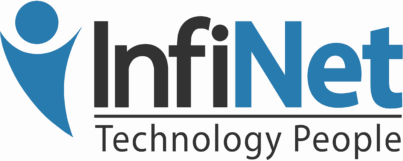Omaha Computer Consultants Who Offer End-to-End IT Coverage
No matter what industry you’re in, no matter the scope of your business operations; and, regardless of your IT challenges – InfiNet is there to help you reach your business networking goals. It takes dedicated computer consultants in Omaha like our team of highly-skilled experts to be able to respond to and remedy any challenge or issue that arises. We should know – we’ve met those challenges many times that help us be the IT company we are, with more expertise, more client loyalty, and more confidence to be the kinds of computer consultants Omaha businesses look to for diligent, responsive IT management solutions.
Toward Better Computer Consulting in Omaha
It’s a question we’ve often asked ourselves: “What does better computer consulting consist of?” Because we always want to make sure we’re hitting right on all points, and that we’re up on the latest trends and developments in information technology. Keeping to high computer consulting standards has helped our IT support enterprise grow with each satisfied client and job well done. Each InfiNet team member’s know-how reinforces our collective standards of excellence and quality, and helps us implement IT strategies with greater alacrity.
Trusted Computer Consultants
For us, each client is an opportunity to roll up our sleeves and bring out our best tools in terms of IT consulting, management, and solution-oriented services. Anything less than our best simply won’t do in today’s competitive IT arena, so we have to bring our A-game each time we answer the call for experienced, knowledgeable IT professionals who understand cyber threat and data breach prevention, multi-layered security, server monitoring and optimization, IT infrastructure development, compliance readiness, and much more.
Call Expert Omaha Computer Consultants Today
The bottom line is, we understand what it takes to get to be among the go-to IT consultants and computer support specialists in the Omaha NE area. We understand every aspect of computing and computer networking as well, and which customized solutions will be best for your enterprise. InfiNet offers among the best IT consulting services for businesses in Omaha, so why not give us a try?
Contact one of our friendly IT consultants today at 402.547.4300 or by email at [email protected] for more info on how you can benefit from computer consulting services in Omaha that seek to bring the best results and remedies to your IT networking table.
Omaha Computer Consultants Who Offer End-to-End IT Coverage Read More »


 Laura Herbolsheimer is an Assistant Account Manager and Service Manager with InfiNet Solutions Inc. She has been part of the team since April 2005. Her hobbies include gardening, traveling and taking road trips, and spending time with family and friends. Her favorite vacation spot is Jackson, Wyoming. Laura met her husband John in high school, but they waited until they were a state apart to start dating after their sophomore year of college. They have two rescue pups and a pair of rescue cats. Laura’s favorite part of working with the InfiNet team is the people, and the clients.
Laura Herbolsheimer is an Assistant Account Manager and Service Manager with InfiNet Solutions Inc. She has been part of the team since April 2005. Her hobbies include gardening, traveling and taking road trips, and spending time with family and friends. Her favorite vacation spot is Jackson, Wyoming. Laura met her husband John in high school, but they waited until they were a state apart to start dating after their sophomore year of college. They have two rescue pups and a pair of rescue cats. Laura’s favorite part of working with the InfiNet team is the people, and the clients.


